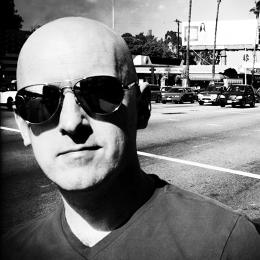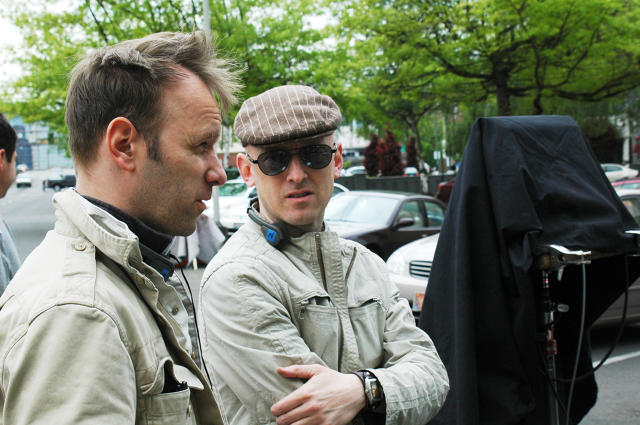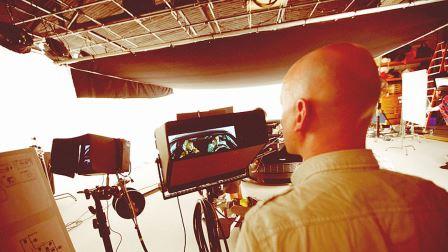You Oughta Be In Pictures: Hardware, Apps, And Advice For Making Your First Movie
Katherine Bigelow and Steven Spielberg didn’t come out of the womb with the chops to make blockbuster movies. They started small, made mistakes along the way, and earned their genius. Ed Wood did much of the same but… well, he made Ed Wood movies.

Jacob Pander is one half of The Pander Brothers: an award-winning multidisciplinary team that’s jammed its fingers into a whole lot of pies. Over the years the team’s directed music videos and made commercials for LG, Panasonic and Adidas Originals. They’ve written and illustrated comics and graphic novels for their own imprint, along with major publishers like DC and Dark Horse Comics. And in between all that, they’ve managed to find the time to film the feature-length movie SELFLESS—which scooped up a number of awards at the BendFilm and Albuquerque film festivals—and their most recent short film, Subtext, among many others.
Even with all of this experience, Jacob won’t be able to tell you which kind of filmmaker you’ll be: a Wood or a Spielberg. But he’s definitely capable of pointing you in the direction of the tools and advice you’ll need to start you on your way to making your first film.
Getting Started
According to Pander, before starting anything, it’s always best to have a clear idea of what you want to accomplish.
“Filmmaking, by nature, is about planning and preparation,” says Pander. “There’s so many moving parts and you’re dealing with so many people that the more planning you do, the more it’ll advance you and the more freedom you’ll have when you’re actually making the film.” To get a grip on what you want to accomplish, bone up on how the experts roll. To do this on the cheap, Pander recommends watching your favorite films with the director’s commentary turned on. It’s a great way to better understand why masters of cinema made the decisions they did while filming and editing certain scenes. Some of Pander’s favorites include Martin Scorsese’s commentary on Taxi Driver and Francis Ford Coppola’s thoughts on Apocalypse Now, The Godfather, and The Godfather Part II. All four of them will provide you with a wealth of anecdotes and information on directorial process.
If you’re ready to invest some time and money to learn about your new craft, Pander has some reading recommendations for you as well: David Mamet’s On Directing Film, Sidney Lumet’s Making Movies, Michael Rabiger’s Directing: Film Techniques and Aesthetics, and Joseph Campbell’s The Hero with a Thousand Faces.
Writing
No matter what kind of film you want to make, you’re going to need a script. Any word processor will get the job done. If you own a Mac, you can turn to Pages. Windows users can fire up Microsoft Word or Open Office. There’s also Celtx: a free-to-use script writing app available for all major platforms.
But if you want to use the tools the pros do, Pander recommends Final Draft for Windows or OS X. It’s a word processing program specifically geared toward scriptwriting that’s been the standard in Hollywood for years. Final Draft is also available on iOS devices, but Android users are unfortunately out of luck. If being able to write on an Android tablet is a must, check out Fade In Mobile and its desktop counterparts for Mac and PC.
Planning
So you finished your script? Congratulations! Now get back to work.
Your actors and crew will need to know what to do, where to go, and which props, cameras, lights, and costumes they will be using. The Pander Brothers use Gorilla to budget and schedule their shoots. It’s a film scheduling, location, script, and budget wrangling application for Mac and Windows computers that will help you keep your cinematic ducks in a row, no matter whether you’re working on your first film or an upcoming summer tentpole production. Unfortunately, the level of sophistication Gorilla offers doesn’t come cheap. A more affordable alternative is Celtx, the script-writing application mentioned above, which also allows you to budget, schedule, and plan your film—all for just $10 a month. Pander says it’s good for scheduling and organizing small shoots, so maybe take it for a spin before investing in anything more expensive.
Action!
“A great story and vision can be communicated with any kind of equipment as long as you have good sound,” says Pander. This is good news, considering how many potential filmmakers already own smartphones or tablets capable of capturing high quality audio and video. Pander explains that he and his brother came close to shooting their last short film, Subtext, on an iPhone, but at the last minute opted to go with a RED camera—which, depending on the model, can cost between $25,000 and $50,000—because of the aesthetics it allowed for.
If you’re looking to upgrade your phone and camera simultaneously on the cheap, the iPhone SE is a good choice because it can shoot 4K video. Spring for the 64GB version though; 4K video will eat up all of your handset’s storage space in no time. If you can’t stomach forking over your cash for an Apple product, Sony’s Z5 smartphone, with its 23-megapixel camera is a great option. It runs Android Marshmallow and, with its MicroSD slot, offers up to 200GB of storage space. What’s more, it’s weatherproof, so shooting in the rain won’t be a problem.

When the time comes to edit your captured video clips into a film, you’ve got a number of options available to you. Adobe Premier Clip is a free download for iOS and Android that can also sync up to the desktop version of the app, Premier Pro CC (subscription required). Premier Clip will allow you to trim or splice video clips together, adjust exposure, highlights, and shadows in your clips, add a soundtrack and credits, and tinker with the audio levels in your footage to make sure that the volume is consistent from clip to clip. For editing short pieces on the fly, Pander recommends Videoshop, but you’ll need an iPad or iPhone to use it.
If you prefer to do your editing on a computer but would rather stay away from Adobe’s subscription services, there’s also Apple’s Final Cut Pro software or their iMovie app. On the Windows side of things, Microsoft Movie Maker is your best bet for a useable piece of free software. It will handle just about every video and audio format under the sun and offers basic editing and video transition effects. If you want to move up to the next level, check out Black Magic Design’s DaVinci Resolve 12 (available for Windows, Linux and Mac computers). DaVinci Resolve offers professional-level nonlinear editing and color correction with an easy-to-use interface.
Break A Leg!
What we’ve shown you here is just the very tip of the filmmaking iceberg, and yet it’s still a lot of information, which can be intimidating.
But don’t worry: You got this. As Pander explains, the only way to become a filmmaker is to make a film.
“Jump into it right away,” says Pander. “Find the tools that will allow you to express something. If you have limited means, do something that’s doable, but get your hands dirty. Get into it. Get something made so that you can see what the results are and learn by doing. There’s only so much you can learn from a book. It’s the combination of doing it and encountering the challenges that will make those books truly resonate.”
Related Video: How Skydance Media Chooses What Goes on TV and What Goes to Film
Fast Company , Read Full Story
(76)













